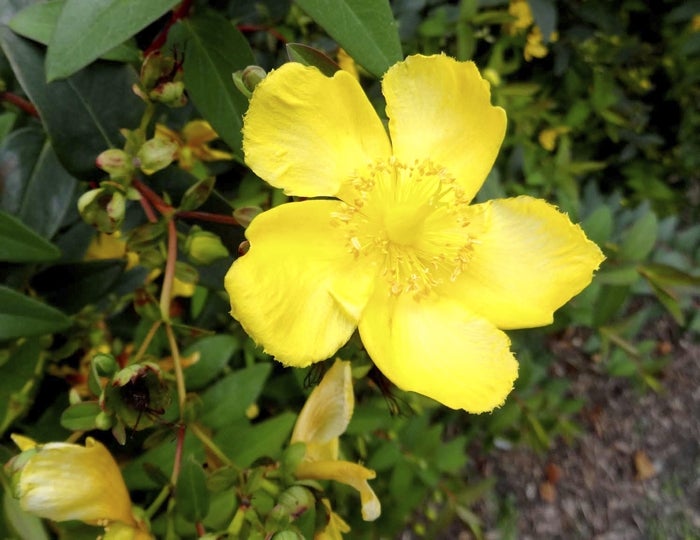Darrell Blackwelder: Answers for your gardening questions
Published 12:06 am Friday, May 29, 2015

- Cooperative Extension This yellow bloom is St. John's wort and is at the Agriculture Center on Old Concord Road.
We’ve now had a few days of warm weather and everyone seems to be longing for more of the cooler weather we experienced earlier last month. Warm weather tends to bring out many undesirable pests and some questions. Below are questions homeowners have posed over the past few days:
Question: My wife and I purchased one of those new types of redbud trees last year. It has finally started to grow and has pods all over the tree. One of my neighbors told me that the tree was actually a legume. I thought soybeans were legume? Can a tree be a legume also?
Answer: Yes. There are a number of trees that are true legumes: redbud, mimosa, black locust, wisteria — just to name a few. Soybeans, garden peas, black-eyed peas and peanuts are also legumes.
Question: I have some tomato plants and I was hoping I could root the suckers and produce new plants for a late summer crop. It seems like my parents used to do this when I was growing up. Can I root tomato suckers and have tomatoes later?
Answer: Yes, these will root and make new plants. You need to keep them moist but not too wet. They should send out roots in a few days.
Question: I was working in my camellias and hollies the other day and found some type of white, sticky insect blobs on the stems and leaves. They were turning the shrubs leaves black. What are these things and how to I get rid of them?
Answer: What you have described sounds like scale insects. Some look like bits of chewing gum stuck to stems of shrubs, while others can be white and sticky. They are often not noticeable until the stems are exposed. If there are only a few insects, simply picking them from the stems is one method of removal. However, if this isn’t practical; use combinations of horticultural oils and insecticides to kill the insects. It may take multiple applications to control the pest. Don’t spray when the weather is excessively hot because the oil may burn the leaves.
Question: There is a plant at the corner of your Agriculture Center that has beautiful yellow blooms on the corner of the sidewalk. Can you tell me what the plant is?
Answer: The plant is most likely St. Johns wort (Hypericum sp.). The plant can be used as a foundation or groundcover. It was completely killed back by the cold winter but has come back nicely this spring. Go to http://www.ces.ncsu.edu/depts/hort/consumer/factsheets/groundcover/hypericum_calycinum.html for more detailed information about the plant.
Darrell Blackwelder is the County Extension Director in Rowan County with horticulture responsibilities with the North Carolina Cooperative Extension Service in Rowan County. Learn more about Cooperative Extension events and activities by calling 704-216-8970 Facebook or online at www.rowanextension.com




